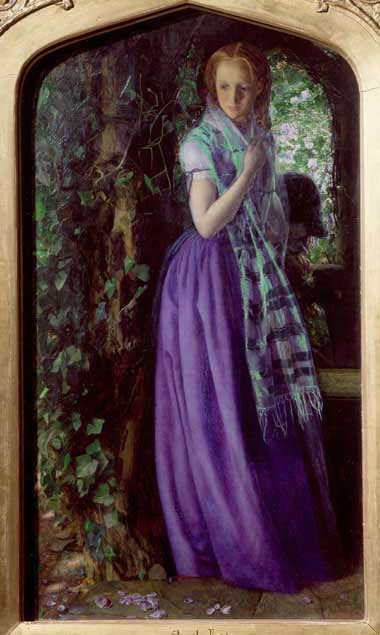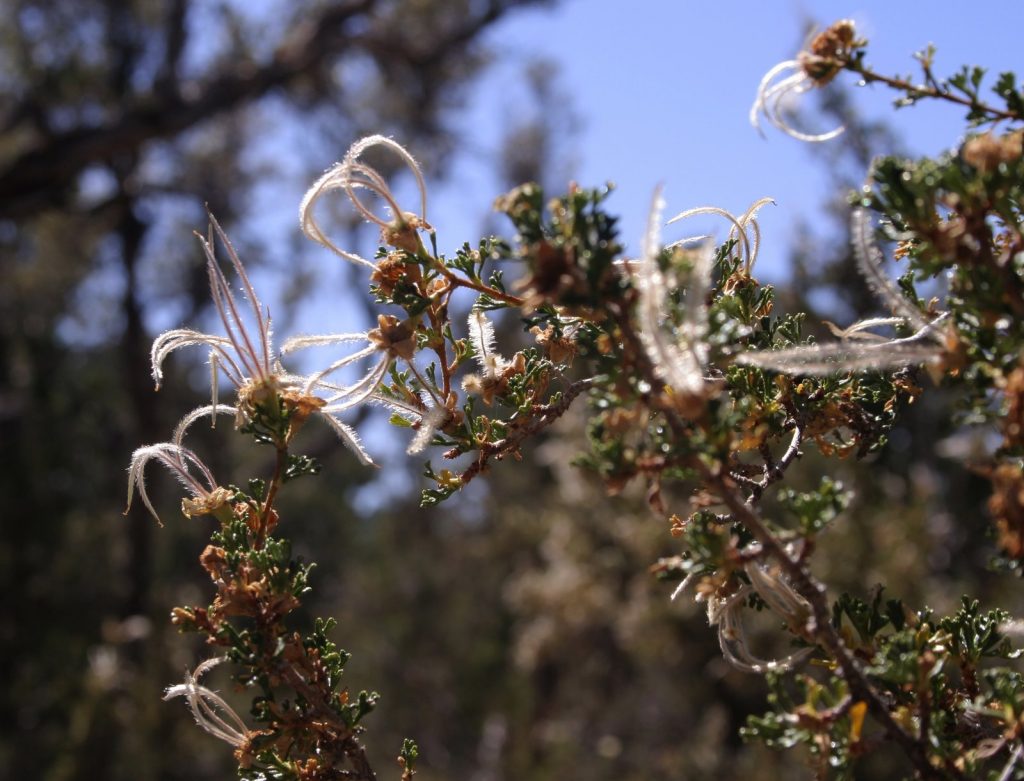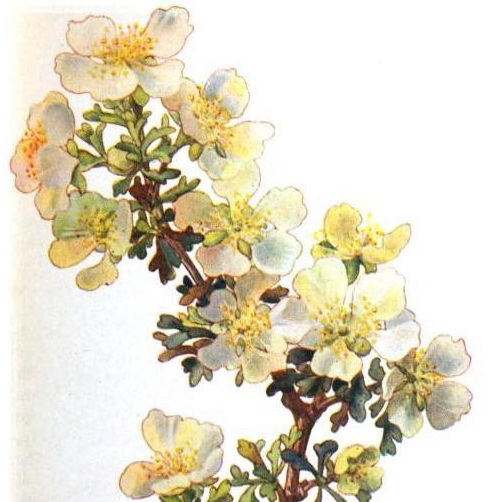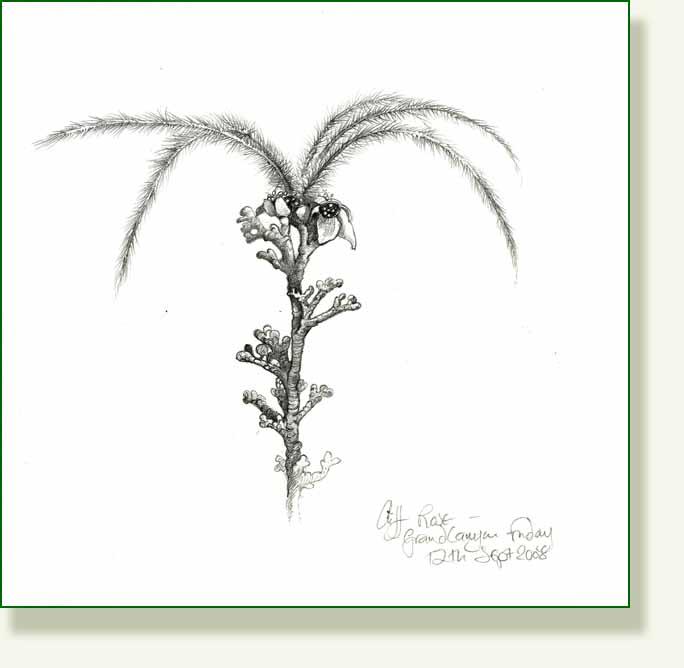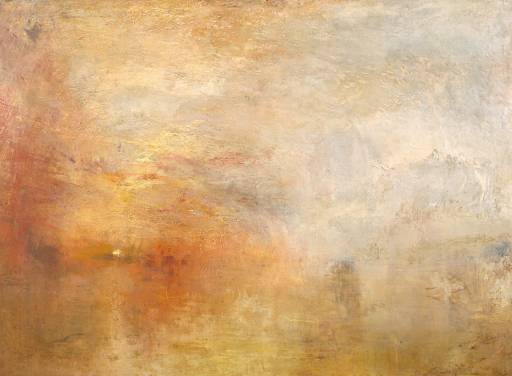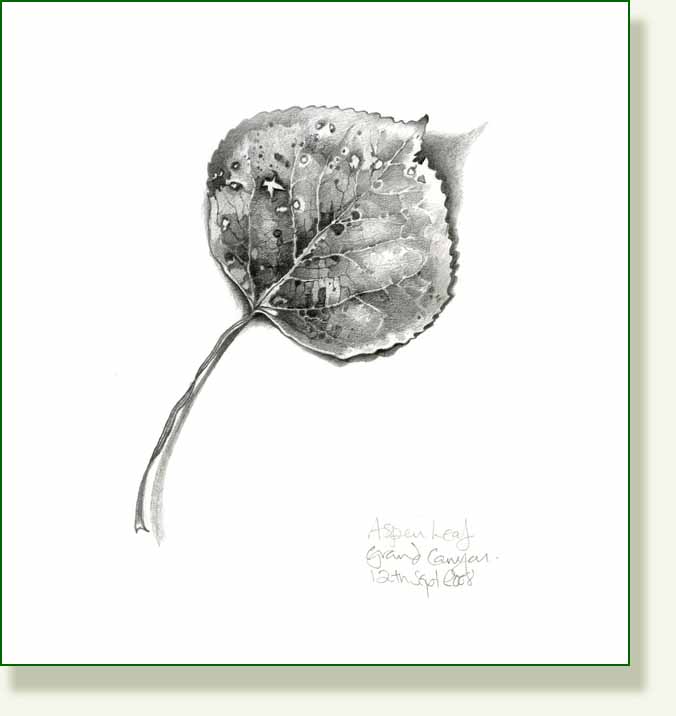I am still immersed in colour and its complexities and Philip Ball’s book ‘Bright Earth’. Looking at how other artists have portrayed the natural world, especially at times of change in either taste, perception or available materials is particularly interesting. Those who dared to make the changes must be admired for their belief and vision. Turner, who I mentioned yesterday strove to portray the impression of nature through bold and daring use of the new colours. His work was criticised as “a specimen of colouring gone mad” but also grudgingly admired as if “done by a Rembrandt born in India” The Pre Raphaelites, following soon after, used pure, sparingly mixed colour in an attempt to portray the realities of their natural world. If Turner was reviled and ridiculed so were they.
Philip Ball writes
” The refusal of the Pre Raphaelites to mute nature’s bright tones to conform with the strictures of good taste led the Times in 1851 to denounce their ‘singular devotion to the minute accidents ….seeking out every excess of sharpness and deformity’
They derided the murky chiaroscuro of the Royal Academy and dubbed its head , Joshua Reynolds, ‘Sir Sloshua Slosh.’
Millais’ Ophelia 1851-2 is filled with new materials : cobalt blue, chromium oxide, zinc yellow, chrome yellow and the richest madder lake. The bright greens here are mixed from Prussian blue and chrome yellow, The Pre Rapaelites tried all manner of mixtures of the new blues and yellows to capture verdant nature…The results, said detractors were ‘unripe enough to cause indigestion’ “
But rather indigestion than constipation?….
Whether you like their subject matter or not is a personal thing but their colours, used straight from the tube, are sublime. Arthur Hughes’ ‘April Love’ (1856) revelled in the new available purple, glows exquisitely and is completely gorgeous when you see the original.
John Ruskin, speaking of Holman Hunts “Our English Coasts” 1852, claimed this was “the first painting to truly capture the play of sunlight across the landscape. “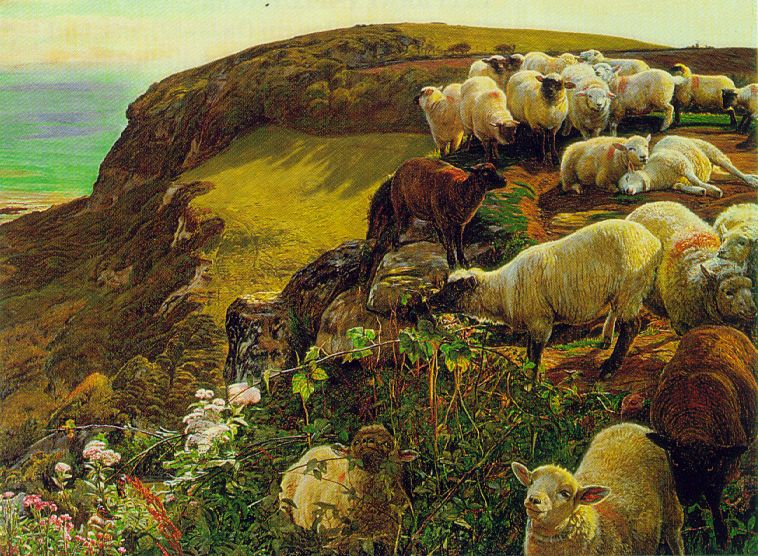
Both are at Tate Britian. my favourite UK Gallery. It seems such a long way away sometimes.
Nature in all its brilliance, even in England, so how do you paint Florida’s colours?
But back to the plants…
If you are visiting the North Rim trails of the Grand Canyon you will surely visit Cape Royal. Here there are fabulous vistas on many sides and room to walk and view in relative peace. The trails are well marked and have interpretive signs too. This comical fluffy thing is the seed head of the Cliffrose, on the sign, the Latin name is Cowania stansburiana but it also seems to be called Purshia stansburiana.
The endearing little plumes are attached to the seeds. When they, plus seeds, are detached from the plant the hairs not only act as parachutes but also as a sort of auto seed drill. When the seed lands in the soil the wind rotates the plume via the curved hairs, twisting the seed and helping to embed it in the soil. Amazing.
The interpretive sign told me that the Hopi Indians made sandals, mats and rope from the stringy bark, arrows from the wood and medicine from the foliage.
Margaret Armstrong’s “Field Guide to Western Wild Flowers” from 1915 places it perfectly in its Grand Canyon setting.
On the rocky rim of the Grand Canyon it is from 4 to 8 ft high, picturesquely gnarled and twisted but stunted looking, the grey bark hanging off the crooked branches and thick distorted trunk in untidy shreds. The flowers pale scanty but faintly scented. Halfway down Bright Angel trail it is a glorious thing, full of colour and fragrance, 12 foot high , luxuriant and healthy looking. When the wind sways the flowering branches to and fro they exhale an exquisite fragrance like orange flowers.”
It makes you want to try that trail doesn’t it, but do it in May when the Cliff Rose is in blossom. Before I leave the canyon and roses I want to share this gorgeous painting with you. It is called Canyon Rose and was painted by a great artist Susan Shatter. I have known about her work for many years now but there seems to be very little to view on the Internet which is a shame. This is an oil, painted in 1986 a big and beautiful 9ft 5 x 4ft 5.
But she is also the master of the huge watercolour. A thought that completely daunts me. Consider this, ‘Crash’ 2006, which is a staggering 3ft 6″ x 9ft 8″.
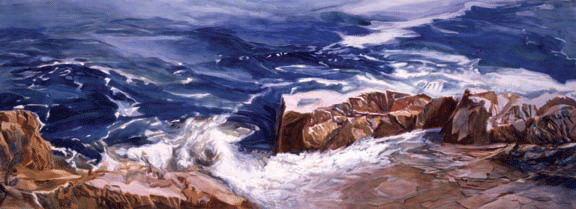
You can see more of her fabulous watercolours here at the DFN gallery
For my small drawing I had to reassemble the sprig from the dried up bits and pieces that survived the trip and my photo. Not ideal but a fair idea of this delighlful plant.
__________________________________________

